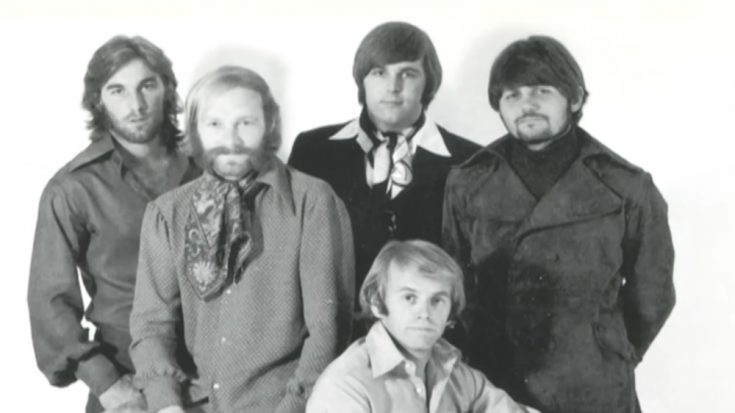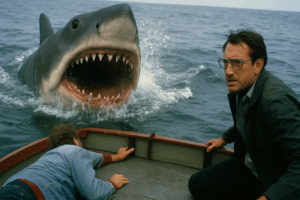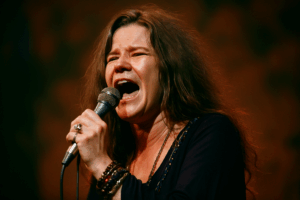Ranking Beach Boys Albums and The Only Bad One

via Amplified - Music & Pop Culture Documentaries / YouTube
Most retrospectives about The Beach Boys lean heavily on surfboards, sunshine, and sweet harmonies. That’s certainly part of the story—but only the top layer. Dig a little deeper and you’ll find a band whose history is steeped in contradiction: dazzling innovation wrapped in commercial pop, a troubled genius at its center, and a legacy that swings between the sublime and the unlistenable.
For a group that became the soundtrack to an idealized California, their origin was far less glamorous. The Beach Boys were suburban kids from Hawthorne, thrust into fame with songs about a lifestyle they mostly didn’t live. Behind the scenes, family tension, creative battles, and personal demons pulled at the seams. And yet, somehow, they produced some of the most beautiful and forward-thinking music of the 20th century.
This list isn’t just about ranking their albums from best to worst. It’s about tracing a strange, uneven arc—how a band could give us a record like Pet Sounds and later release something fans would rather forget. From landmark innovations to occasional misfires, here’s a journey through every Beach Boys album worth hearing—and the one that might not be.
View this post on Instagram
Pet Sounds (1966)
Mike Love may have called it “Brian’s ego music,” but Pet Sounds still stands as the defining masterpiece of The Beach Boys’ discography. Inspired by Rubber Soul and driven by Brian Wilson’s obsessive vision, it pushed beyond surf-pop and into lush, emotional territory. Harpsichords, theremins, and unorthodox harmonies gave it an otherworldly tone few pop albums had dared to explore.
Beneath the beauty was something deeply personal. With lyricist Tony Asher translating Brian’s emotional cues into words, songs like Caroline No, I Just Wasn’t Made For These Times, and God Only Knows peeled back layers of longing and vulnerability. It was heartbreak sung like prayer.
More than just a critical success, Pet Sounds changed the course of music. Paul McCartney famously cited it as a major influence on Sgt. Pepper, and its experimental edge opened the doors for countless artists who followed. Decades later, its emotional resonance still hasn’t dulled.
View this post on Instagram
Surf’s Up (1971)
By the early ’70s, the band was eager to distance itself from the sunny image that made it famous. With a new manager pushing Brian to revisit the shelved Smile material, the band entered more introspective and challenging territory. The result was Surf’s Up, an album that didn’t chase the charts—it chased meaning.
The title track, originally left unfinished, became a centerpiece of grandeur and melancholy. With Van Dyke Parks’ cryptic lyrics and Brian’s haunting melodies, it sounded like the last breath of an old dream. ’Til I Die, another Wilson original, felt like a quiet surrender—stunning in its stillness and sorrow.
Other band members stepped up too. Bruce Johnston’s Disney Girls (1957) captured wistful Americana, while new songs explored environmentalism and social awareness. It was a band learning how to grow up, and maybe even how to grieve its former self.
View this post on Instagram
The Beach Boys Today! (1965)
Something changed in Brian Wilson during the Today! sessions. Exhausted by touring and slipping into anxiety, he chose the studio over the stage—and the music got deeper. No longer just riding waves and cars, the songs looked inward, pairing introspection with sparkling arrangements.
Side A still offered upbeat hits like Help Me Rhonda and Do You Wanna Dance?, but Side B was something else entirely. Ballads like She Knows Me Too Well and Please Let Me Wonder brought emotional weight rarely heard in mainstream pop. These weren’t just catchy—they were confessional.
With the help of the Wrecking Crew, Wilson crafted a polished and layered sound that hinted at what was to come. Today! marked the turning point—Brian’s first step toward Pet Sounds, and proof that The Beach Boys could evolve beyond the beach.
View this post on Instagram
Pacific Ocean Blue – Dennis Wilson (1977)
It would’ve been hard to predict that Dennis—the band’s wild child—would create one of the most poignant solo albums ever linked to The Beach Boys. But Pacific Ocean Blue revealed a different side of the drummer: tender, poetic, and achingly sincere. It’s not just a solo record—it’s a soul laid bare.
The album’s magic lies in its contrasts. Lush, almost orchestral instrumentation washes over Dennis’ rough and weathered vocals, lending songs like River Song and You and I a sense of cracked nobility. They’re not perfect—but that’s the point. There’s truth in the imperfection.
More than just a footnote in Beach Boys history, Pacific Ocean Blue stands as a spiritual companion to Pet Sounds. Where Brian reached for celestial harmonies, Dennis dug into earthly sorrow. Both made music that endures because it feels real.
View this post on Instagram
Sunflower (1970)
If there’s a hidden gem in The Beach Boys’ catalog, it’s Sunflower. Often overlooked due to poor sales, the album showcased a rare moment of unity, where every member brought something valuable to the table. Instead of one vision, this was a patchwork quilt—warm, rich, and deeply human.
Brian wasn’t the sole architect anymore, but his presence still hovered. Add Some Music To Your Day and Cool Cool Water offered glimpses of his genius, while Dennis and Carl stepped forward as capable songwriters in their own right. Their contributions weren’t just filler—they were standouts.
Despite being packed with strong material, the album failed to find a mainstream audience. Still, Sunflower has only grown in stature. Its gentle optimism, musical range, and group effort make it one of the most rewarding listens in their discography—if you know where to look.
View this post on Instagram
The Smile Sessions (2011)
After Pet Sounds failed to achieve the commercial success Brian Wilson hoped for, he set his sights even higher. His next project, Smile, was intended to be nothing less than a “teenage symphony to God”—a swirling, experimental, and deeply ambitious work unlike anything the pop world had seen. But the weight of expectations, along with Wilson’s increasing drug use and mental strain, led to its collapse.
Over the years, fragments of Smile found their way onto other Beach Boys records in altered forms, fueling speculation about what could have been. It wasn’t until decades later, in 2004, that Wilson completed a solo version of the album. While impressive, fans still craved the original vision.
That vision finally materialized with The Smile Sessions in 2011, a painstaking reconstruction of Wilson’s 1966 masterwork. With stunning harmonies, layered arrangements, and a blend of innocence and avant-garde daring, it offers a glimpse into the mind of a genius at his creative peak—even if the story behind it remains bittersweet.
View this post on Instagram
Wild Honey (1967)
Following the confusion left by Smiley Smile, Wild Honey felt like a course correction. Brian Wilson described it as an effort to keep things simple—a raw and soulful detour that leaned on R&B influences. Gone were the sweeping orchestrations; in came rhythm, grit, and a refreshing looseness.
Carl Wilson stepped into the spotlight with remarkable energy, especially on the title track, where his vocal soars with joy. Darlin’, a Motown-infused reworking of an old tune, gave the band a radio hit. And tracks like Country Air brought a laid-back warmth that hinted at the group’s West Coast roots without the clichés.
In hindsight, Wild Honey now feels like a quiet triumph—ignored in its day but cherished by fans and critics alike in the decades since. It’s the sound of a band rediscovering its footing, stripped of expectations and studio pressure, making music simply because they wanted to.
View this post on Instagram
Holland (1973)
Holland might be one of the most unusual albums in the Beach Boys’ catalog—written and recorded during a temporary relocation to the Netherlands. Hoping to inspire Brian and refresh the group dynamic, their manager set the entire band up in a makeshift studio overseas. Instead, the move mostly left them homesick.
That homesickness fed into the music. The California suite offered a dreamy, yearning look back at the band’s roots, while Sail On Sailor—a late addition that saved the album from being shelved—provided one of the strongest openers in their post-Pet Sounds era. The odd, whimsical Mount Vernon And Fairway EP added a surreal flourish, courtesy of Brian.
Holland is flawed but compelling. It blends nostalgia, experimentation, and solid songwriting, showing that even during a creatively turbulent phase, the Beach Boys could still deliver something ambitious and deeply personal.
View this post on Instagram
Love You (1977)
Of all their late-period releases, Love You stands out as both a curiosity and a gem. Written almost entirely by Brian Wilson, the album showcases his quirky sense of melody and his newfound fascination with synthesizers. Stripped of polish and convention, it’s raw, weird, and—somehow—deeply moving.
The lyrics teeter between charmingly simple and just plain strange. Tracks like Johnny Carson and Solar System are delightfully oddball, while The Night Was So Young and I Wanna Pick You Up reveal moments of sincere tenderness. There’s a childlike wonder here that feels totally unfiltered.
Love You isn’t for everyone, but for those who get it, it’s one of Brian’s most emotionally honest creations. It’s less a traditional Beach Boys album and more a snapshot of his inner world at the time—equal parts sweet, sad, and strange.
View this post on Instagram
…and One to Avoid: Still Cruisin’ (1989)
It’s tempting to pretend that the Beach Boys gracefully bowed out with Love You, but the truth is more complicated. After scoring a surprise hit with Kokomo in 1988, they tried to ride that wave with Still Cruisin’. The result is the kind of album that makes you wish they hadn’t bothered.
Packaged as a soundtrack tie-in of sorts—featuring songs the band had in films—it’s a mishmash of forgettable filler and cringe-worthy attempts at staying relevant. Tracks like Somewhere Near Japan and Island Girl sound like pale imitations of their past selves, while Brian’s In My Car comes off more novelty than nostalgia.
Still Cruisin’ wasn’t just a critical failure—it marked the point where the Beach Boys veered into self-parody. For a band that once redefined pop music, this low point serves as a reminder of just how far they could fall when chasing trends instead of chasing truth.
View this post on Instagram











